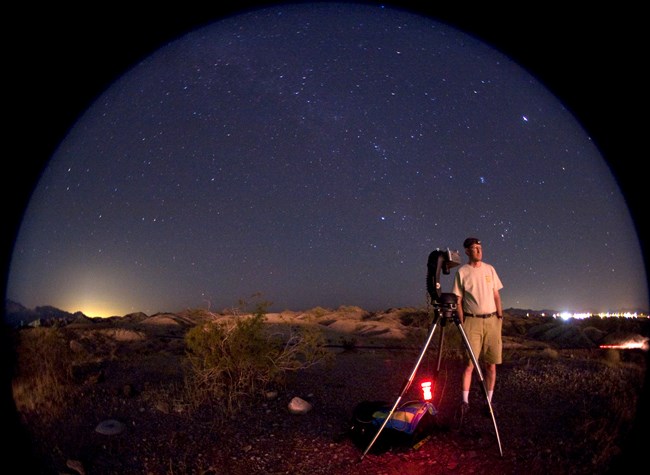
Artificial light can substantially impact celestial viewsheds and natural habitats, whether the glare from a light or the glow from a city. As a leader in light pollution measurement and mitigation, the Natural Sounds and Night Skies Division of NPS monitors sky quality conditions in and around natural parks, advances understanding about the ecologic impacts of light pollution, and is a resource for night skies data and materials. The division also assists federal, state and local agencies in developing strategies for managing light pollution. Annual training workshops are among the services this team provides.
Park planners, scientists, interpreters, astronomers, community leaders and other participants at the 2016 Night Skies Training Workshop learned about light pollution's impact on humans, wildlife and starry nightscapes, and strategies to safeguard dark sky resources. Topics ranged from high-impact lighting threats and the tools and techniques used for measuring and monitoring natural and artificial light, to policies and basic practices for sustainable lighting.
In an exercise designed to illuminate issues close to home, night skies experts led participants on a "night light walk" in downtown Fort Collins, Colorado to observe lighting scenarios typical to city streets and national park units. Equipped with a battery of light meters, the group measured the luminance and illuminance as well as color spectra of different fixtures, and assessed their effectiveness. Single, unshielded lights were among the biggest offenders, along with pole lights such as those found at stadiums, bus depots and parking lots—sources that significantly contribute to sky-glow.
Learn more about the Fort Collins "night light walk" in this National Public Radio story:
National Parks Do Their Part
Lights are needed for safety and orientation, but every lighting situation can be mitigated. National parks are doing their part to protect dark sky viewsheds. Actions range from incorporating training material in educational presentations for park visitors, to installing dark sky friendly light fixtures and bulbs, to becoming dark sky certified destinations.
Learn about night sky programs offered at national parks, and find your park for a night sky experience near you!
Last updated: April 26, 2016
